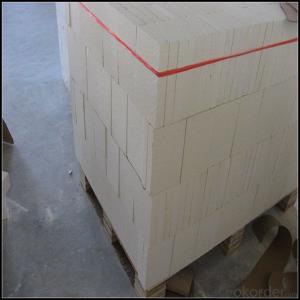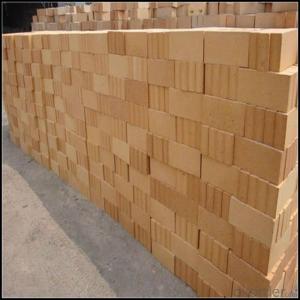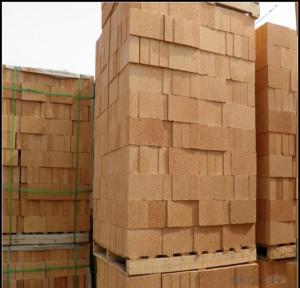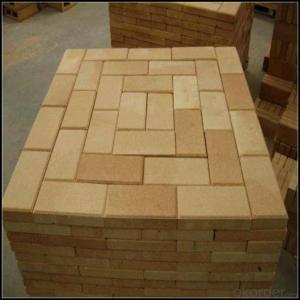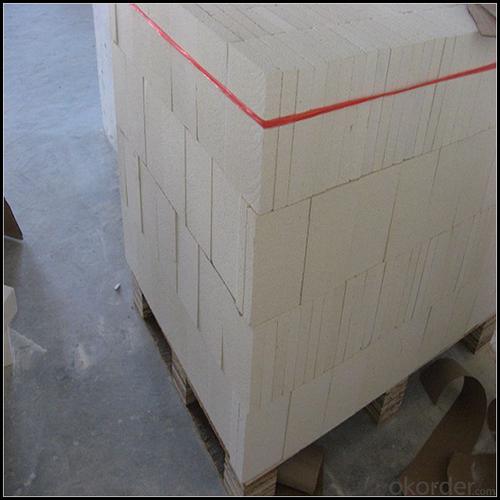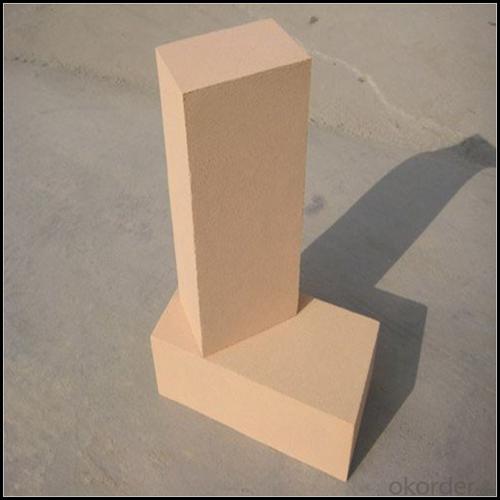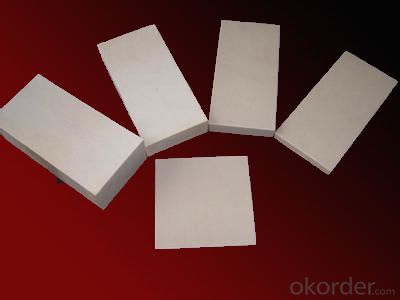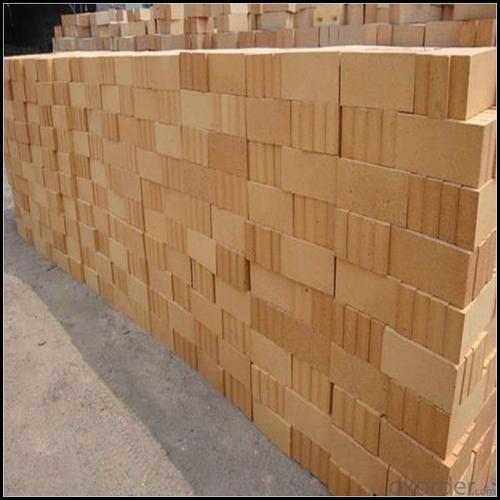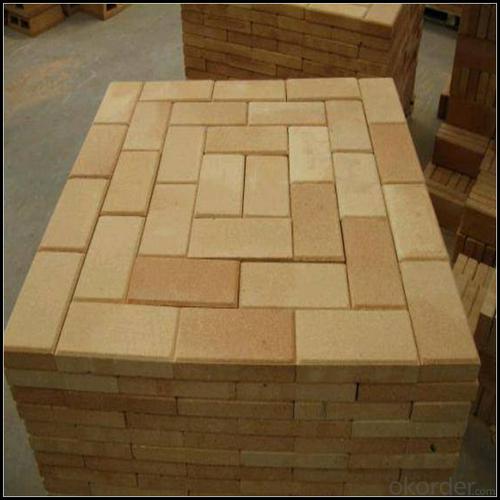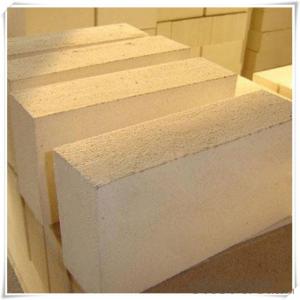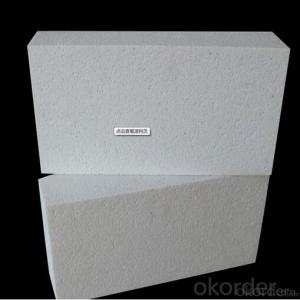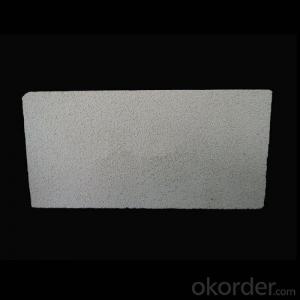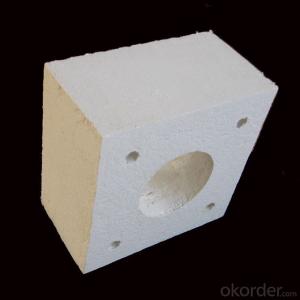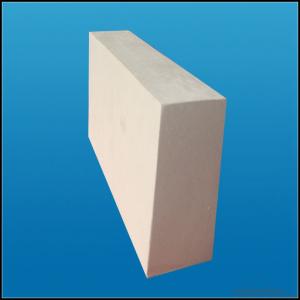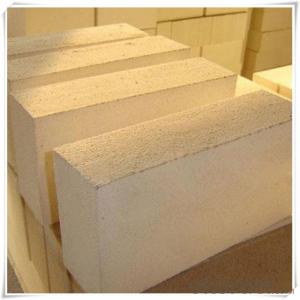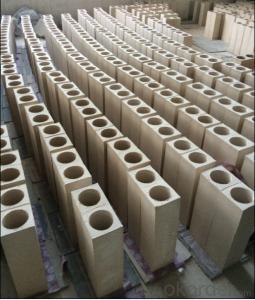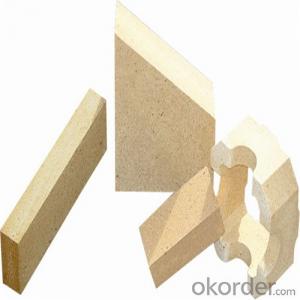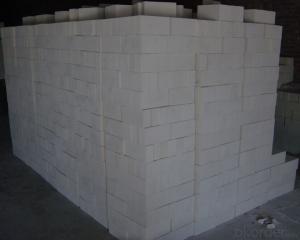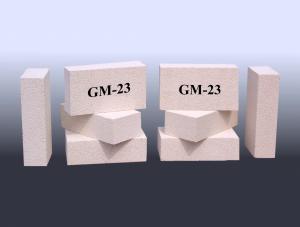SK32, SK34 Insulating Fireclay Refractory Brick for Kiln Use
- Loading Port:
- China main port
- Payment Terms:
- TT OR LC
- Min Order Qty:
- 1 m.t
- Supply Capability:
- 800 m.t/month
OKorder Service Pledge
OKorder Financial Service
You Might Also Like
Refractory Brick
CMAX firebricks are classified under temperature between 1300℃ to 1700℃, manufactured from high purity alumina clay by mixing, press-forming, drying, sintering and machining. Bricks contain carefully-graded organic fillers which are burned out during sintering to give a uniform controllable pore structure. This technique makes product feature low thermal conductivity and excellent heat insulation
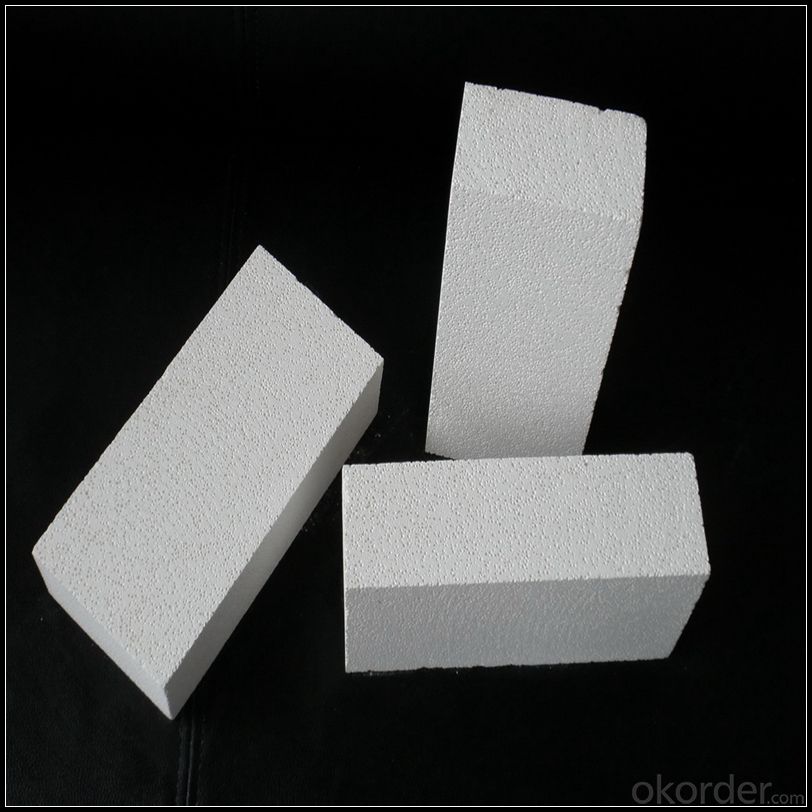
Features
1. Certificate of Quality for each parcel
2. Raw material from China, Australia and Germany
3. Good price
4. Many sizes in stock ; Making tiles accroding to your drawings
5. Resistance: Excellent
6. Quick delivery& Professional service
Application
1.Carbon bake furnaces in the aluminium industry
2.Preheat zones and cyclones of rotary cement kilns
3.Insulation for glass tanks
4.Coke ovens
5.Blast furnaces
6.Reheating furnaces
7.Suspended roofs
8.Lime kilns
9.chimney
Data Sheet
Classification Temperature (℉/℃) | 3000/1650 |
Bulk Density (g/cm3 ) | ≤1.0 |
Thermal Conductivity | |
800℃, W/m.K | ≤0.39 |
1000℃, W/m.K | ≤0.43 |
1200℃, W/m.K | ≤0.48 |
Reheating Linear Change (%) | 1550℃×12h |
≤0.9 | |
Chemical Composition (%) | |
Al2O3 | ≥75 |
Fe2O3 | ≤0.5 |
Packaging & Shipping
Packaging Details:Be packed in fumigated wooden pallets
Delivery Detail: 30 days after order
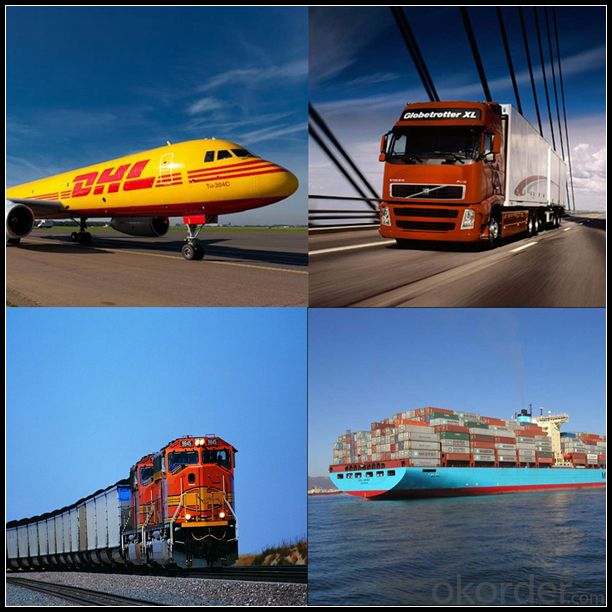
Our Services
Optimum solution and product supply of refractories for high temperature industries, such as iron steel, non-ferrous, petrochemical and building materials.
Engineering design, contract and consult for refractories, and civil architecture design.
Research, development, manufacture and sale of superhard materials.
R&D, manufacture and sale of special packing materials for export.
Inspection, supervision and arbitration of refractories.
Consultation and services in refractories information.
Training and cultivation of high-level talents in refractories profession
Sales Network

Company Information
CNBM (China National Building Material) Group is the largest comprehensive building materials group in China that in integrate scientific research, manufacturing and logistics into one entity. The largest building materials and equipment specialists in China. Upon State Council approval, today CNBM owned more than 300 subordinate manufacturing factories and servicing companies. There are 6 fully owned public listed companies and 11 partially owned with substantial shares public listed companies. In many of these fields, CNBM is playing the leading role in the building industry in the country.
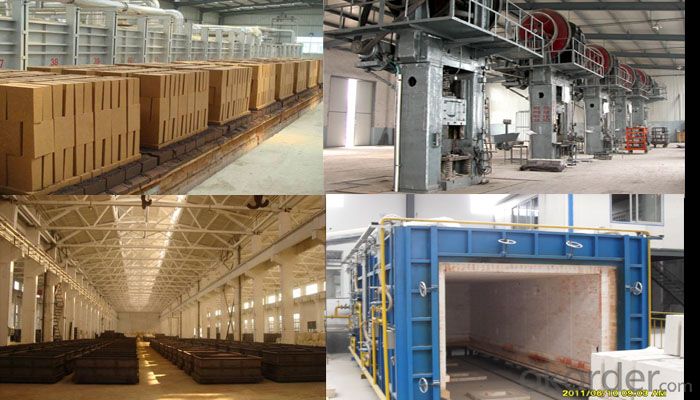
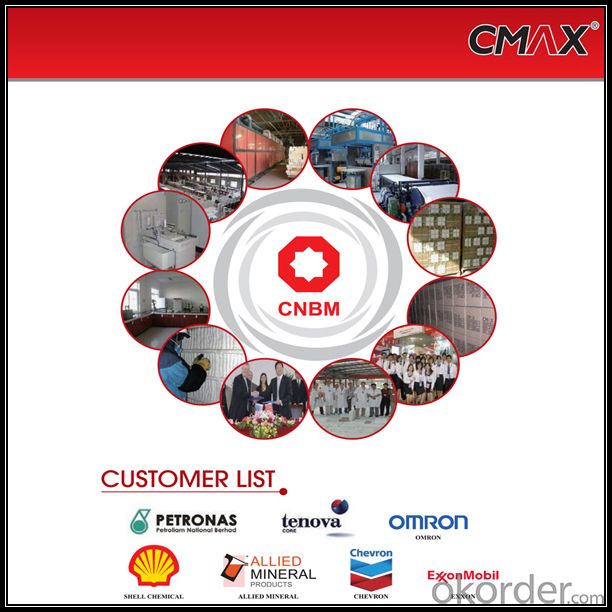
FAQ
1. Which products do you have?
We have all kinds of refractory brick, castable, mortar, cement, ceramic fiber products, etc.
Or you could browse our products to choose what you need.
2. Can you give me a brief introduction of the application of your products?
We are mainly specializing in the refractory materials in iron and steel, cement, glass, ceramics, petrochemical, electric power Industry, etc.
3. If I need your offer, what information do you need?
In order to choose suitable products, it will be appreciated to provide us the information, such us specification, technical data, order quantity, products application etc. If any question, please contact us freely.
- Q: Can insulating fire bricks be used in the construction of boilers?
- Yes, insulating fire bricks can be used in the construction of boilers. Insulating fire bricks are made from lightweight materials that have high thermal insulation properties, making them suitable for use in high-temperature applications such as boilers. These bricks help to reduce heat loss and improve energy efficiency by preventing the escape of heat from the boiler. Additionally, they have excellent resistance to thermal shock and can withstand extreme temperatures, making them a reliable choice for boiler construction.
- Q: Are insulating fire bricks safe to use in contact with food or beverages?
- Insulating fire bricks are not safe to use in direct contact with food or beverages. These bricks are typically made from materials such as silica, alumina, and other refractory materials that are designed to withstand high temperatures and provide excellent insulation. While they are commonly used in industrial applications like kilns and furnaces, they are not intended for use in food preparation or consumption. Insulating fire bricks can release harmful substances when exposed to high temperatures, especially if they are not properly cured or if they come into direct contact with food or beverages. These substances may include trace amounts of heavy metals or other toxic compounds that can pose health risks if ingested. To ensure the safety of food and beverages, it is best to use materials that are specifically designed for contact with food, such as food-grade stainless steel, glass, or ceramic. These materials are non-reactive and do not release any harmful substances when exposed to high temperatures. It is essential to prioritize the health and wellbeing of individuals by using appropriate materials for food and beverage preparation.
- Q: Can insulating fire bricks be used as a lining for boilers?
- Yes, insulating fire bricks can be used as a lining for boilers. They have excellent thermal insulation properties, high heat resistance, and can withstand the extreme conditions within a boiler. Insulating fire bricks help in minimizing heat loss, improving energy efficiency, and maintaining consistent temperatures within the boiler.
- Q: Can insulating fire bricks be used in chimneys and fireplaces?
- Yes, insulating fire bricks can be used in chimneys and fireplaces. Insulating fire bricks are specially designed to withstand high temperatures and provide excellent insulation. They are made from lightweight materials, such as ceramic fibers or refractory materials, which help to minimize heat transfer. This makes them an ideal choice for lining chimneys and fireplaces, as they can help to keep the heat inside the firebox and prevent it from escaping through the chimney. Additionally, insulating fire bricks can also help to improve the efficiency of the heating system by reducing heat loss and improving the overall heat output. However, it is important to note that insulating fire bricks should only be used in the appropriate areas of the chimney or fireplace, such as the firebox, and not in the smoke chamber or flue, as these areas require different types of bricks that can withstand the corrosive effects of the flue gases.
- Q: How do insulating fire bricks contribute to energy efficiency?
- Insulating fire bricks contribute to energy efficiency by providing excellent thermal insulation properties, which help to minimize heat loss and retain heat within a structure. This insulation reduces the need for excessive heating or cooling, resulting in lower energy consumption and cost savings.
- Q: Are insulating fire bricks resistant to phosphoric acid?
- Yes, insulating fire bricks are resistant to phosphoric acid.
- Q: Can insulating fire bricks be used as a base material for casting refractory shapes?
- Indeed, insulating fire bricks are viable for serving as a foundational material for molding refractory shapes. These bricks are engineered with the explicit purpose of enduring extreme temperatures and delivering insulation, rendering them appropriate for deployment in refractory applications. Notably, they possess a low thermal conductivity, thereby minimizing heat dissipation and maximizing energy efficiency. Furthermore, their lightweight composition facilitates convenient handling and shaping, rendering them an optimal foundational material for casting refractory shapes. Nevertheless, it is crucial to carefully scrutinize the specific requirements and characteristics of the refractory shapes being molded to ascertain that insulating fire bricks are the most suitable option for the intended application.
- Q: Are insulating fire bricks resistant to reducing atmospheres?
- Insulating fire bricks exhibit resistance to reducing atmospheres. These bricks have been specifically engineered to endure elevated temperatures and harsh circumstances, including exposure to reducing atmospheres. They are crafted from top-notch refractory materials that possess the capability to withstand the detrimental effects of reducing atmospheres, which may encompass gases like carbon monoxide or hydrogen. Due to their low thermal conductivity and superior insulation properties, insulating fire bricks prove to be exceptional in scenarios where reducing atmospheres are present. They efficiently shield the surrounding areas from heat transfer and safeguard the structure against potential harm. Furthermore, these bricks boast remarkable mechanical strength and outstanding resistance to thermal shock, enabling them to retain their integrity even in the face of challenging conditions. In conclusion, the durability of insulating fire bricks coupled with their capacity to endure high temperatures and harsh environments confirms their resistance to reducing atmospheres.
- Q: Can insulating fire bricks be used for insulation in steam pipes?
- Insulating fire bricks are indeed a viable choice for insulating steam pipes due to their exceptional ability to withstand high temperatures and provide excellent thermal insulation. With their low thermal conductivity, these bricks effectively impede heat transfer, making them perfect for insulating steam pipes. This quality aids in minimizing heat loss and maintaining the steam's temperature within the pipes. Furthermore, the lightweight nature and easy installation of insulating fire bricks make them a convenient option for insulating steam pipes.
- Q: Do insulating fire bricks have a low thermal conductivity?
- Yes, insulating fire bricks have a low thermal conductivity. These bricks are specifically designed to minimize heat transfer, making them an excellent choice for applications that require thermal insulation. Compared to regular fire bricks, insulating fire bricks have a lower density and higher porosity, which helps to reduce the flow of heat through conduction. This low thermal conductivity allows the bricks to act as effective barriers against heat transfer, keeping the surrounding areas cooler and increasing energy efficiency.
Send your message to us
SK32, SK34 Insulating Fireclay Refractory Brick for Kiln Use
- Loading Port:
- China main port
- Payment Terms:
- TT OR LC
- Min Order Qty:
- 1 m.t
- Supply Capability:
- 800 m.t/month
OKorder Service Pledge
OKorder Financial Service
Similar products
Hot products
Hot Searches
Related keywords
